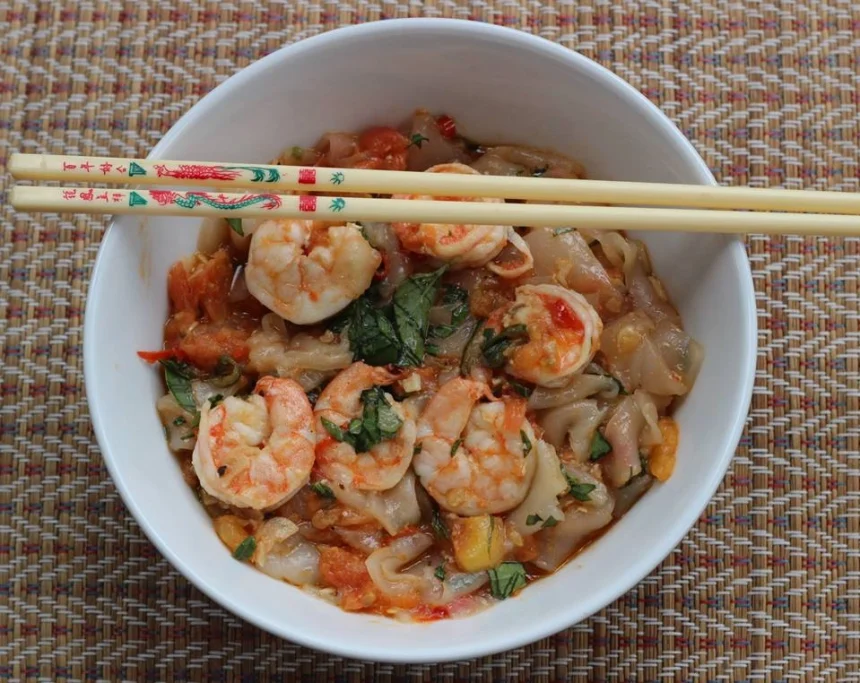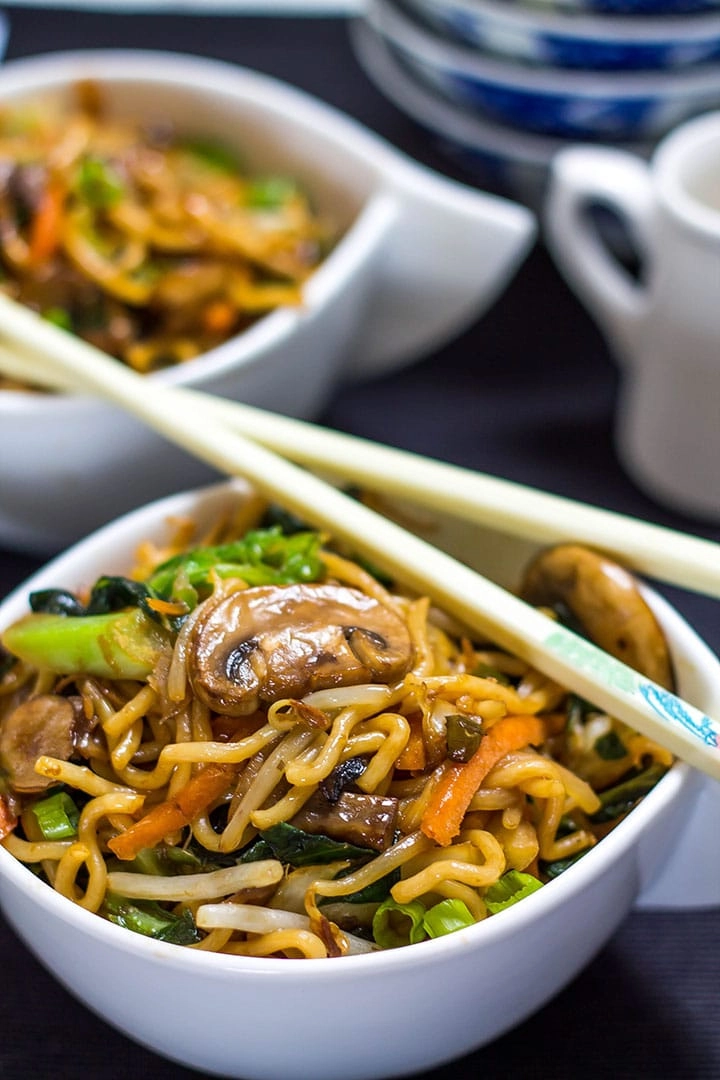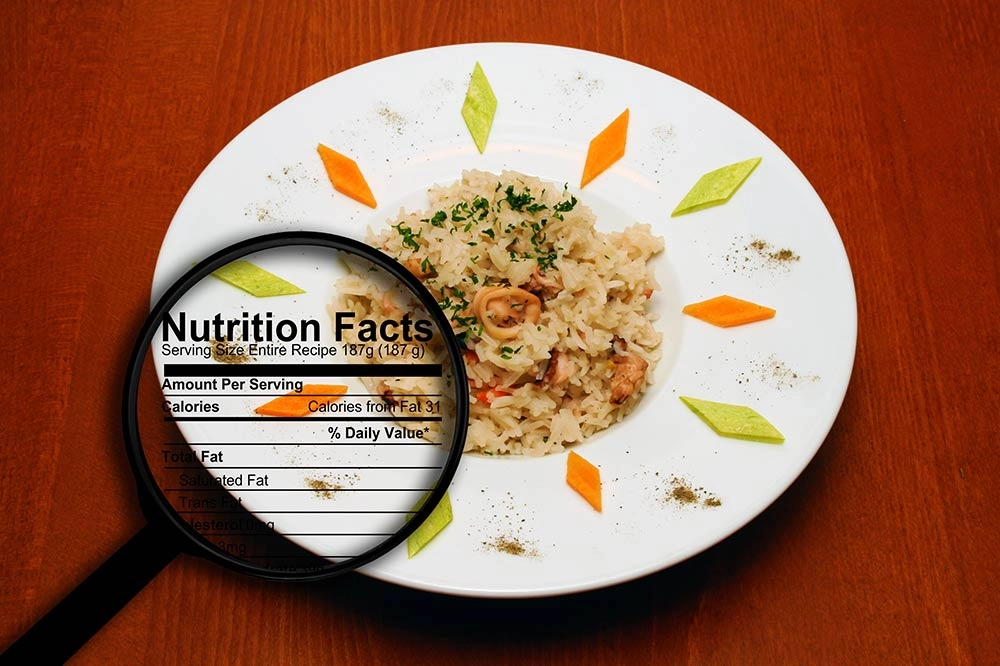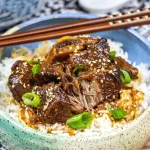Ingredients for Phat Si-Io
Kernzutaten
To make authentic Phat Si-Io (also known as Pad See Ew), you’ll need a few key ingredients:
- Wide rice noodles (fresh or dried) – the chewy texture is essential
- Sojasoße – both light and dark soy sauce for flavor and color
- Garlic – minced for that classic aroma
- Chinese broccoli (Gai Lan) or regular broccoli as a substitute
- Eier – scrambled into the noodles
- Protein – commonly chicken, beef, pork, or tofu for a vegetarian option
- Öl – vegetable or peanut oil works best for stir-frying
Substitutions and Variations
If you can’t find some ingredients, no worries:
- Substitute Chinese broccoli mit broccoli florets or kale
- Verwenden tamari or a gluten-free soy sauce for a gluten-free version
- Swap wide rice noodles with flat rice noodle pasta sold in Asian markets or the international aisle of supermarkets
- Verwenden tofu instead of meat for a vegetarian or vegan-friendly dish
Where to Find Ingredients
Most ingredients for Phat Si-Io are easy to find in the U.S.:
- Asian grocery stores carry fresh wide rice noodles, Gai Lan, and authentic soy sauces
- Large supermarkets often stock dried wide rice noodles, soy sauce, garlic, eggs, and common veggies
- If fresh Chinese broccoli isn’t available, check the produce section for other greens like kale or regular broccoli
- Online retailers also offer specialized ingredients if you want authentic soy sauces and rice noodles delivered to your door
By stocking these core items, you’re set to whip up this flavorful Thai stir-fried noodle dish anytime.
If you want to try other easy Asian-inspired dishes, check out my easy chicken fried rice recipe for a simple weeknight meal.
Step-by-Step Cooking Instructions for Phat Si-Io
Prep Time Cook Time Servings
- Prep time: 10 minutes
- Cook time: 8-10 minutes
- Servings: 2-3
Equipment Needed
- Large wok or non-stick skillet
- Spatula or wooden spoon
- Bowls for ingredients
- Strainer for noodles
Step-by-Step Guide
- Prepare the noodles: Soak dried wide rice noodles in warm water for about 10 minutes or until soft. Drain and set aside. Fresh wide rice noodles work well too, just loosen them before cooking.
- Mix the sauce: Combine dark soy sauce, light soy sauce, and a dash of oyster sauce (or vegetarian substitute) in a small bowl.
- Heat the wok: On medium-high heat, add a tablespoon of oil and let it heat until shimmering.
- Cook the protein: Add your choice of protein (chicken, tofu, or beef) and stir-fry until cooked through. Remove and keep aside.
- Stir-fry vegetables: Toss in garlic and vegetables like Chinese broccoli or kale. Stir them until tender but still crisp.
- Add noodles and sauce: Add the drained noodles to the wok, pour sauce over, and stir-fry quickly to coat evenly. Push the noodles aside for space.
- Reintroduce protein: Add the cooked protein back into the wok, mix well with noodles and veggies.
- Final touches: Crack an egg over the mixture (optional), stir it around the pan until cooked and combined.
- Serve hot: Transfer to plates, garnish with crushed red pepper or fresh lime if desired.
Visual Aids
- Use clear photos or quick videos of each major step like soaking noodles, stir-frying veggies, and toss-frying noodles with sauce.
- Show the final plated dish to give an appetizing look.
This easy, authentic Thai stir-fried noodle recipe ensures you get tasty Phat Si-Io with that classic wok hei flavor in your own kitchen.
Tips for Perfect Phat Si-Io
Noodle Texture
To get that classic chewy, slightly charred texture, use fresh wide rice noodles if possible. If you only find dried ones, soak them in warm water until soft but not mushy. Avoid overcooking noodles during prep—they should finish cooking in the wok. This keeps the noodles firm and prevents them from turning soggy.
Wok Hei Flavor
Wok hei, or the smoky char from high-heat cooking, is key to authentic Phat Si-Io. Use a well-seasoned, hot wok or a heavy pan that can handle high heat. Cook quickly, stirring constantly to avoid steaming. Adding a splash of oil before noodles hits the pan helps them crisp just right.
Customization
Phat Si-Io is flexible to fit your taste or dietary needs:
- Swap proteins: chicken, beef, tofu, or shrimp all work well.
- Change veggies: use Chinese broccoli, bok choy, or even kale for a healthy twist.
- Adjust sauces: use gluten-free soy sauce or tamari for gluten-free versions, or add a bit of chili for spice.
- Keep it vegetarian by skipping fish sauce and using mushroom sauce instead.
Storage and Reheating
Store leftovers in an airtight container in the fridge for up to 2 days. When reheating, use a microwave or toss back in a hot pan for a couple of minutes. Adding a small splash of water or soy sauce helps loosen noodles and refreshes the dish. Avoid overheating to keep noodles from drying out.
Nutritional Information and Dietary Considerations
Calorie Count
Phat Si-Io is a moderately calorie-packed dish, mainly because of the rice noodles and oil used in cooking. A typical serving ranges from 350 to 450 calories depending on portion size and added ingredients like protein or vegetables. Using less oil or leaner proteins can help cut calories while keeping the dish flavorful.
Health Benefits
This Thai stir-fried noodle recipe includes ingredients like soy sauce, garlic, and Chinese broccoli, which offer some nutritional perks. Chinese broccoli adds fiber and vitamins, while garlic has antioxidants. Choosing whole grain or brown rice noodles can boost the fiber content, making it a healthier option.
Dietary Adaptations
Phat Si-Io easily adapts for various diets:
- Vegetarian or Vegan: Skip meat and add tofu or extra veggies. Use vegetarian soy sauce or tamari for authenticity without animal products.
- Gluten-Free: Use tamari or gluten-free soy sauce instead of regular soy sauce and check that the noodles are certified gluten-free, such as rice noodles made specifically for gluten intolerance.
- Low-Sodium: Opt for low-sodium soy sauce and cut back on added salt to keep sodium levels in check.
These tweaks make Phat Si-Io accessible for most dietary needs while maintaining that classic Thai street food taste.
Serviervorschläge und Kombinationen
Serving Ideas
Phat Si-Io is great on its own as a hearty meal, but you can boost the experience by adding simple sides. Fresh cucumber slices or a light green salad can help balance the rich soy sauce noodles. If you prefer some tang, a wedge of lime or a drizzle of chili vinegar adds a nice kick.
Pairs
For drinks, iced Thai tea or a crisp lager complements the bold flavors perfectly. If you want something non-alcoholic, try sparkling water with lemon or iced green tea. To round out the meal, pair Phat Si-Io with classic Thai appetizers like spring rolls or grilled satay skewers for a full street food vibe.
Presentation Tips
- Use a wide, shallow bowl or plate to showcase the noodles.
- Garnish with fresh cilantro, chopped scallions, or crushed peanuts for color and crunch.
- Serve with lime wedges and extra chili flakes on the side so everyone can adjust the heat and tang to taste.
- Keep the noodles loose, not clumped, for a more inviting look.
These small touches make your Phat Si-Io meal look as good as it tastes, perfect for casual dinners or entertaining friends.
Cultural Context and Fun Facts
Origins
Phat Si-Io, often known as Pad See Ew outside Thailand, is a classic Thai stir-fried noodle dish. It traces its roots back to Chinese immigrants in Thailand who brought their cooking styles and combined them with local flavors. Over time, it evolved into a staple of Thai street food thanks to its rich, savory soy sauce base and easy preparation.
Street Food Appeal
This dish is a favorite on busy Thai streets because it’s quick, filling, and affordable. Vendors use large woks over high heat to achieve that signature smoky flavor called “wok hei.” It’s common to see it served in small plates, perfect for a fast lunch or a late-night snack. Its simple ingredients and bold taste keep it popular in food markets and roadside stalls across Thailand.
Fun Fact
The name “Phat Si-Io” literally means “fried with soy sauce,” highlighting the key ingredient that sets it apart from other noodle dishes. Despite its humble origins, it’s become popular worldwide, featured in menus from authentic Thai restaurants to American kitchens looking to make an easy Thai stir-fried noodles dish.
Häufig gestellte Fragen
What is Phat Si-Io?
Phat Si-Io is a Thai stir-fried noodle dish featuring wide rice noodles cooked in a savory soy sauce mix. It’s similar to Pad See Ew but often a bit simpler and quicker to make at home.
Can I make Phat Si-Io gluten-free?
Yes, use gluten-free tamari or coconut aminos instead of regular soy sauce. Make sure your noodles are rice-based and don’t contain wheat.
What noodles work best for this recipe?
Wide flat rice noodles are ideal. You can find them fresh or dried in most Asian markets or online. Fresh ones are softer and cook faster.
Can I make Phat Si-Io vegetarian or vegan?
Absolutely. Swap out any meat for tofu or extra vegetables, and use vegetarian oyster sauce or just soy sauce to keep it vegan-friendly.
How do I get that smoky wok hei flavor at home?
Use a very hot wok or skillet, don’t overcrowd the pan, and cook quickly. A little char on the noodles adds that authentic street food taste.
How long does Phat Si-Io keep in the fridge?
Store leftovers in an airtight container for up to 3 days. Reheat quickly in a hot pan or microwave, adding a splash of water if it gets dry.
Is Phat Si-Io healthy?
It’s a balanced dish with carbs, protein, and veggies. You can make it healthier by adding more vegetables and using lean protein or tofu. Opt for less oil and low-sodium soy sauces.
Where can I find authentic ingredients in the US?
Check your local Asian grocery stores or online retailers for wide rice noodles, soy sauce varieties, and Thai chili paste. Many major supermarkets also carry basic ingredients now.
Can I prepare Phat Si-Io in advance?
Yes, you can prep the ingredients ahead and stir-fry everything fresh when ready. Pre-cooked noodles tend to stick together, so keep them lightly oiled and separate.












